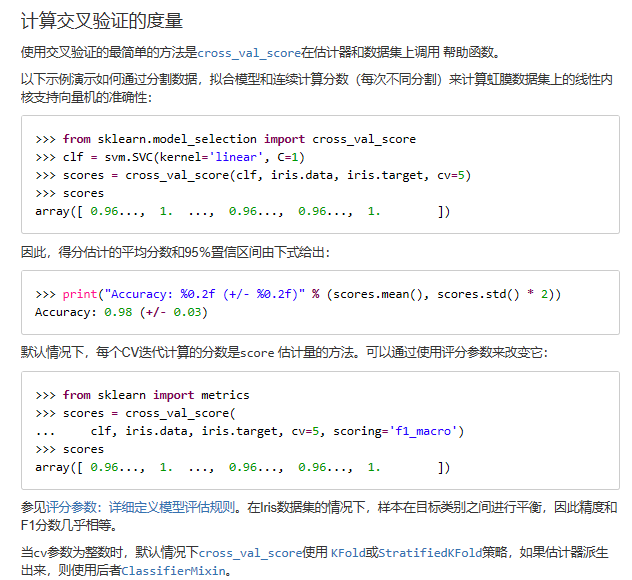1、kfold:自己分样本来交叉验证迭代

-
导入模块:from sklearn.model_selection import KFold
-
参数:
KFold(n_splits=3, shuffle=False, random_state=None) ''' n_splits : int, default=3 Number of folds. Must be at least 2. shuffle : boolean, optional Whether to shuffle the data before splitting into batches. random_state : int, RandomState instance or None, optional, default=None If int, random_state is the seed used by the random number generator; If RandomState instance, random_state is the random number generator; If None, the random number generator is the RandomState instance used by np.random. Used when shuffle == True. '''
n_splits:就是将样本分成多少份。进行k折验证
shuffle:是否在分割成批次之前将数据洗牌。
random_state:如果INT,随机状态是随机数生成器所使用的种子;如果是随机状态实例,随机数是随机数生成器;如果没有,随机数生成器是NP-随机使用的随机状态实例。当洗牌= =真时使用。
-
代码示例
from sklearn.model_selection import KFold kf = KFold(n_splits=5,shuffle=False)
c_range= [0.01,0.1,1,10,100]
for C in c_range:
for train,test in kf.split(X):
lr = LogisticRegression(C = C, penalty = 'l1')
lr.fit(X.iloc[train,:],Y.iloc[train,:].values.ravel())
y_pred = lr.predict(X.iloc[test,:].values)
2、【交叉验证度量】直接交叉验证cross_val_score
